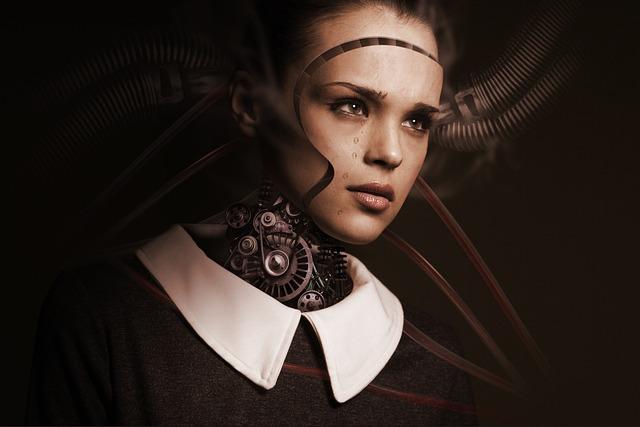In a world where technology and humanity merge seamlessly, the concept of “James Lovelock Cyborgs” emerges as a fascinating exploration of the interconnectedness between man and machine. Drawing inspiration from the visionary ideas of James Lovelock, these cyborgs represent a fusion of organic life and technological advancement, blurring the lines between what it means to be human. Join us on a journey through the realm of cyborgs, where innovation and evolution converge in ways that challenge our perceptions and push the boundaries of possibility.
Table of Contents
- Exploring James Lovelock’s Vision of Cyborgs
- Blending Nature and Technology in Lovelock’s Perspective
- Implications of Cyborgs in Gaia Theory
- Embracing the Future: Integrating Humanity with Machines
- Q&A
- In Conclusion
Exploring James Lovelock’s Vision of Cyborgs
James Lovelock’s visionary outlook on cyborgs opens up a realm of possibilities where man and machine seamlessly intertwine, challenging traditional notions of humanity and technology. In Lovelock’s perspective, cyborgs represent a harmonious fusion of organic and synthetic elements, embodying a new form of life that transcends conventional boundaries.
This amalgamation of biology and technology not only reshapes our understanding of existence but also prompts contemplation on the future of evolution itself. As cyborgs blur the lines between human and machine, they underscore the intricate relationship between biology and artificial intelligence, highlighting the transformative potential of symbiosis in redefining what it means to be alive in a technologically advancing world.

Blending Nature and Technology in Lovelock’s Perspective
Imagine a world where the boundary between nature and technology blurs, creating a seamless integration that harmonizes the organic and the artificial. In Lovelock’s vision, cyborgs embody this fusion, where humans and machines coexist symbiotically, transcending conventional categorizations.
- Enhancing human capabilities through technological enhancement.
- Preserving and respecting natural ecosystems despite technological advancements.
- Embracing a future where harmony between nature and technology prevails.
As we navigate the complexities of modern life, Lovelock’s perspective challenges us to rethink our relationship with the environment and the tools we create. The concept of cyborgs not only sparks intrigue but also prompts introspection on the evolving interplay between humanity and innovation.

Implications of Cyborgs in Gaia Theory
As we delve into the realm of cyborgs within the context of Gaia theory, a myriad of implications arise, sparking both curiosity and contemplation. The fusion of organic life with technological enhancements not only challenges our conventional understanding of nature but also opens doors to new perspectives on evolution and symbiosis.
<ul>
<li><strong>Interconnectedness:</strong> Cyborgs blur the lines between human and machine, illustrating the interconnectedness of all beings in the intricate web of life.</li>
<li><strong>Adaptation:</strong> Through the incorporation of technology into our bodies, we witness a unique form of adaptation that mirrors nature's own ability to evolve in response to environmental changes.</li>
<li><strong>Mutualism:</strong> The relationship between cyborgs and the environment can be seen through the lens of mutualism, where both entities benefit and coexist harmoniously.</li>
</ul>
<p>Furthermore, the concept of cyborgs challenges us to rethink our role in the ecosystem and consider how we can co-create a sustainable future where man and machine collaborate in harmony rather than opposition.</p>
Embracing the Future: Integrating Humanity with Machines
In a world where technology continues to advance at an unprecedented rate, the concept of merging humanity with machines is no longer just a far-fetched idea but a tangible reality. Picture a future where individuals seamlessly integrate with technology, enhancing not only their physical capabilities but also their cognitive functions. This fusion of human and machine, often referred to as cyborgs, opens up a realm of possibilities that challenges our very understanding of what it means to be human.
Embracing this paradigm shift involves a delicate balance between the organic and the synthetic, where individuals harness the power of technology to transcend their limitations while staying true to their core humanity. By embracing the integration of humanity with machines, we embark on a journey towards a future where the lines between biology and technology blur, leading to innovations that redefine how we interact with the world around us. As we navigate this uncharted territory, one thing remains clear – the path to a harmonious coexistence between humans and machines lies in our ability to adapt, evolve, and embrace the endless possibilities that lie ahead.
Q&A
Q: Who is James Lovelock, and what is his connection to cyborgs?
A: James Lovelock is a renowned British scientist, environmentalist, and futurist who proposed the Gaia hypothesis, suggesting that the Earth is a self-regulating system. In his later years, Lovelock delved into the concept of cyborgs, envisioning a future where humans and machines merge seamlessly to enhance our capabilities.
Q: What are cyborgs, and how do they relate to Lovelock’s ideas?
A: Cyborgs, short for cybernetic organisms, are beings that have both organic and biomechatronic body parts. Lovelock’s fascination with cyborgs stems from his belief in the potential for humans to evolve into a new species by integrating with advanced technology, leading to a harmonious coexistence between man and machine.
Q: How does Lovelock’s perspective on cyborgs differ from traditional views on technology?
A: Lovelock’s view on cyborgs challenges conventional notions of technology as separate from nature. Instead of fearing the rise of machines, he sees cyborgs as a natural progression of human evolution, serving as a bridge between biology and technology to adapt and thrive in a rapidly changing world.
Q: What implications do Lovelock’s ideas about cyborgs have for society and the environment?
A: Lovelock’s vision of cyborgs raises thought-provoking questions about identity, ethics, and the future of humanity. By exploring the potential of cyborgs, he prompts us to reevaluate our relationship with technology, the environment, and our own existence, urging us to embrace innovation while considering the consequences of blending man and machine.
In Conclusion
In a world where technology and humanity intersect, the concept of James Lovelock’s cyborgs opens up a realm of endless possibilities. As we navigate the blurred lines between man and machine, one thing remains certain – the future holds a tapestry of innovation and evolution yet to unfold. Let us embrace the marvels of technological symbiosis and venture forth into a new era where the fusion of man and machine paves the way for a future limited only by our imagination. Join us in exploring the boundless horizons of cyborg integration, where the essence of humanity intertwines with the brilliance of technology, shaping a world where the extraordinary becomes ordinary, and the unimaginable becomes reality. Embrace the cyborg revolution with open minds and unbridled curiosity, for in this convergence lies the promise of a future beyond our wildest dreams.



0 Comments